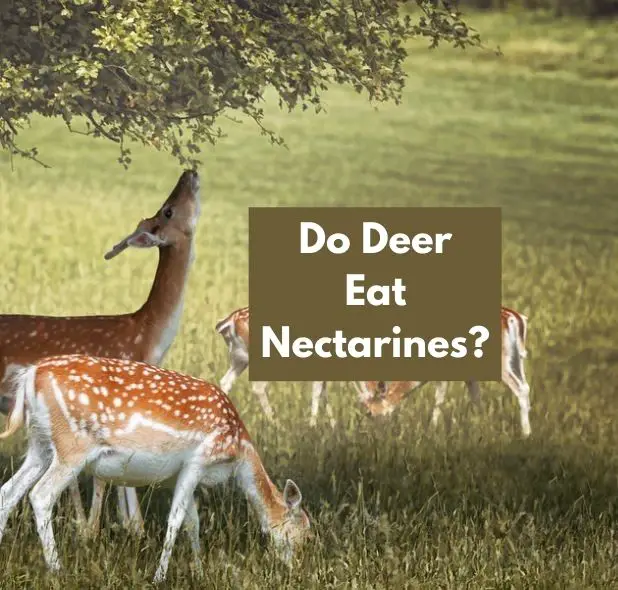There are a lot of myths out there about what deer do and do not eat, especially when it comes to common flowers and plants. One common question is: do deer eat nectarines?
Yes, deer love to eat nectarines throughout the year. They will eat the nectarine, nectarine pits, leaves, and young nectarine trees. Deer are attracted to nectarines because of their sweet taste.
Considering that a single deer can eat up to ten pounds of plants each day, you can see how deer eating nectarines can do some serious damage to these trees!
Why Do Deer Eat Nectarines?
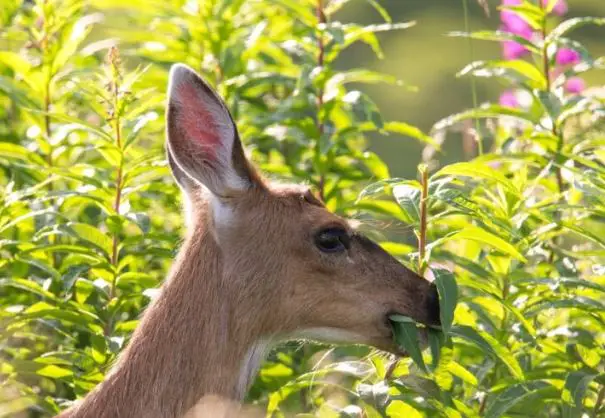
As we covered, deer will eat the leaves of nectarines mostly in fall as compared to the fruits in summer.
Deer have been known to eat the entire nectarine, along with the leaves of nectarine trees.
They’ll even eat the tops and limb tips of young saplings in the spring.
But why do they do this?
Deer like sweet foods and plants that are well-watered and fertilized, and nectarines check every box.
Deer can do some serious damage to a large number of nectarines in a single sitting if they’re hungry enough!
This was confirmed in a 1999 study on deer plant-eating habits by Cornell University.
Plants like nectarines contain water, sugar, carbohydrates, and nutrients, which makes them an ideal food source for deer.
And don’t think that newer nectarine trees are safe either: deer actually prefer new growth because they’re more tender.
Additionally, deer will consume a wide variety of foods like nectarines based on opportunity.
They’re planted in the ground and grow easily in many areas, so they’re easy for deer to access.
In fact, nectarines are increasing in popularity for hunters who want a deer food plot but don’t have access to farming equipment.
This is because nectarines are relatively easy to grow and attract deer so well.
If you’re not convinced, leave some nectarines out or plant some, and wait to see what happens!
Do Deer Eat Nectarine Pits?
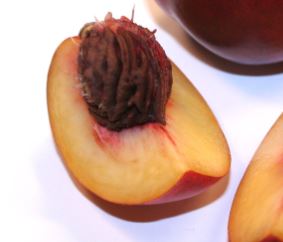
Deer will usually eat the entire nectarine, including the pit when they are munching down in an orchard of nectarine trees.
Along with deer eating nectarine pits, they’ll also eat nectarine tree leaves and even the tips and buds of young nectarine tree saplings.
How Do I Keep Deer From Eating My Nectarine Tree?
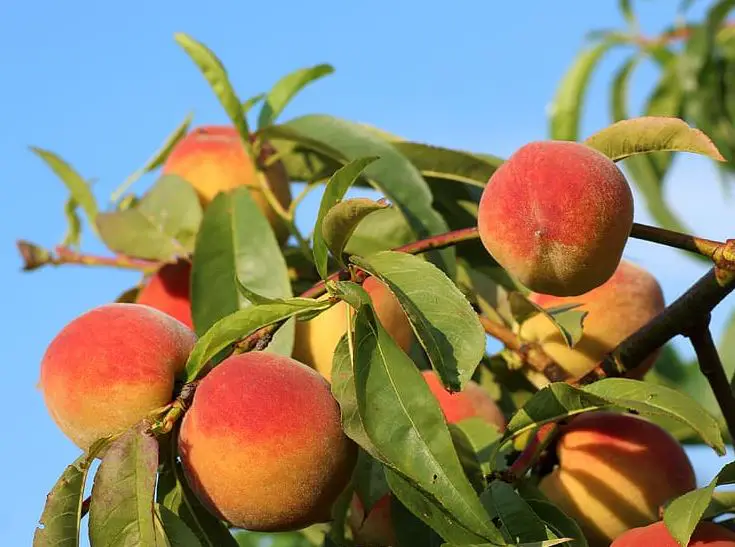
Some farmers and hunters encourage deer to browse their nectarines as part of food plots or other attractants.
If you’re in the other camp and want to protect your nectarines from deer, we’ve got some great options for you.
There are a few things to keep in mind when you’re protecting nectarines from hungry deer: their habits, your scent, repellent options, and when you plant them.
Deer will eat nearly anything if they’re hungry enough, so your main goal is making your garden as least inviting to deer as possible.
Check out our guide on how to keep deer from eating plants where we cover 25 quick and easy tips for keeping hungry deer out of your garden.
Will Nectarine Trees Grow Back After Deer Eat Them?
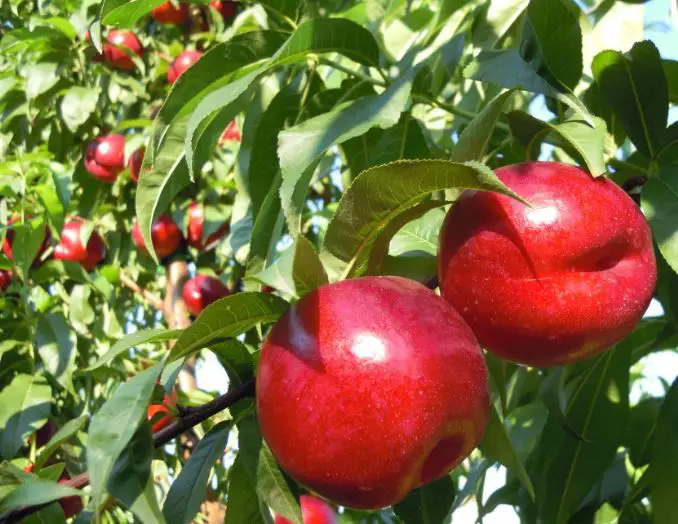
Fortunately, most trees can heal after a good bit of deer damage.
You’ll want to trim off any loose or shredded bark where it’s not tightly secured to the trunk.
Cut any wounds on the tree into a football shape which will help the tree heal faster.
Prune back any damaged limbs, and take preventative measures to keep the deer from damaging them in the future.
Are Nectarines Good For Deer?

Nectarines have small amounts of fiber and a good amount of sweet carbohydrates, so they attract deer easily.
In addition to being a great source of protein, deer eating nectarines provide them with the following vitamins and minerals:
- Vitamin A
- Vitamin C
- Zinc
- Phosphorous
- Magnesium
- Potassium
These vitamins and minerals provide deer with many benefits.
For example, vitamin C will help protect deer against scurvy, and vitamin assists in deer immune system function.
Deer need calcium for bone, teeth, and antler growth and health as well as other bodily functions like milk production and metabolism.
Phosphorus also aids deer in body and antler growth.
Magnesium is great for antler growth, increasing body weight, and has immune system benefits for deer.
Potassium is great for deer because it helps maintain a good pH balance and aid in proper digestion.
Fat-Soluble Vitamins in Nectarines For Deer
Vitamins A and calcium are fat-soluble, so they can be stored in the deer’s fat and liver to be used later as needed.
This means that vitamin A content from deer-eating nectarines can be “stored up” for later use, which is highly beneficial.
Water-Soluble Vitamins In Nectarines For Deer
Vitamin C, B Vitamins, phosphorus, zinc, and potassium are all water-soluble, which means they cannot be stored, so they must be replaced continually.
So a deer that eats nectarines for the vitamin C content must continue to consume foods that contain these necessary vitamins to stay healthy.
How To Feed Deer Nectarines
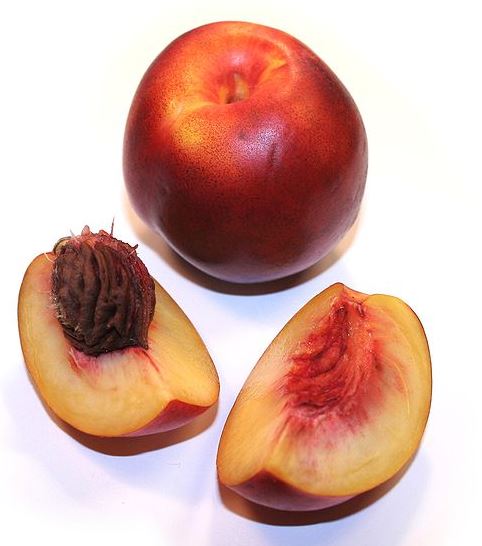
Most people who ask if deer like nectarines are concerned with keeping deer away from them.
If you are trying to feed deer nectarines in your backyard and attract them, then this next section of our guide is for you.
There are a few things to keep in mind when feeding deer nectarines: the size of the portion, your scent, and how many deer you’re feeding.
Make sure to place the nectarines on the ground where they’re visible and can be easily reached by deer.
If you’ve got a hickory tree, the nuts will naturally fall on the ground and the deer will eat them, usually after all other food resources have been depleted.
If deer are not normally around your area in winter, don’t feed them leading up to winter as they will not migrate where and when they should.
This will lead to the deer relying on you as their food source and can result in starvation.
Should I Cut Nectarines For Deer To Eat?
Chances are that it’s not worth it for you to cut nectarines for deer.
You could leave your scent on them, plus the deer’s teeth are designed to be able to eat food that’s best for them.
Nectarines are naturally soft, so it’s not necessary to cut them up for feeding to deer.
Don’t Leave Your Scent On Deer Food
Deer have a keen sense of smell that allows them to smell human scent farther than bloodhounds can, and can smell up to six different scents at once.
Deer won’t eat food like nectarines if they have a strong human scent on them, so you should take care to minimize your trace.
You can do this by rinsing the nectarines and also washing your hands with antimicrobial soap.
Alternatively, you can put a few drops of apple cider vinegar on your hands when handling the food you’ll be giving to the deer.
Another easy option is to use gloves when handling nectarines for deer to eat.
Consider The Amount Of Deer You’re Feeding
If you have lots of deer in your area, think twice about putting out food continuously for them.
If you bring deer together at the same feeding site, it can increase their risk of contracting the chronic wasting disease or other communicable diseases from each other.
Do Deer Eat Nectarines? Wrapping Things Up
So, do deer eat nectarines?
The answer is yes!
Deer will eat nectarines whenever they can, especially when the trees are tender and young.
They’ll happily eat the nectarine, nectarine pit, nectarine tree leaves, soft limbs, and buds if they’re able to.
Fortunately, there are many steps you can take to protect your nectarine trees from deer which we’ve outlined above in this guide.
Have any observations to add to the discussion? Be sure to let us know in the comments below.
Check our our other helpful wildlife guides while you’re here:

